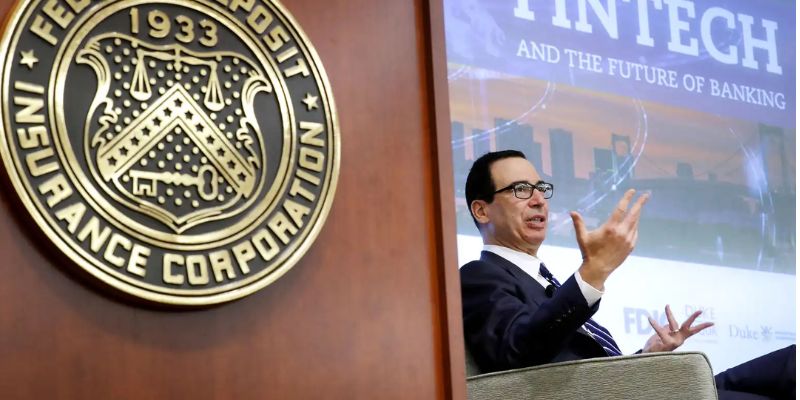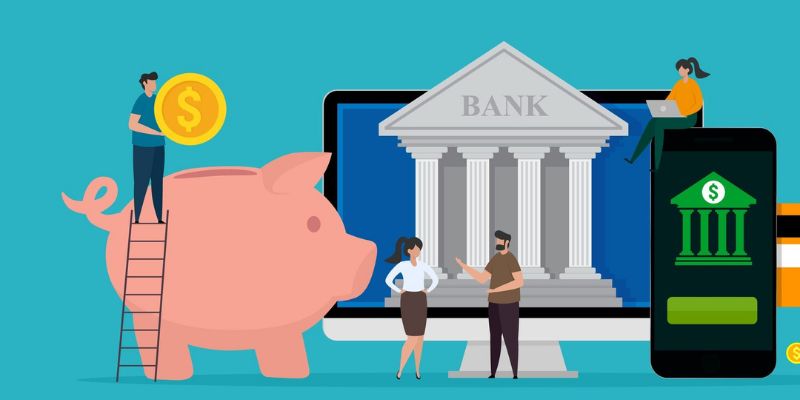Impact of Financial Disintermediation on Banks: Are Banks Facing Obsolescence?
It’s a shift that’s shaking the very foundations of traditional banking. As people gravitate towards peer-to-peer lending and innovative fintech solutions, one can’t help but ask: How is the impact of financial disintermediation on banks truly unfolding? With every click and swipe, customers bypass once-crucial financial hubs, leaving banks scrambling to keep up. Here, we dive into the seismic changes reshaping the landscape. We explore the squeeze on bank profits and the race to adapt. Let’s unravel this financial enigma: Are banks simply reinventing, or are they inching towards irrelevance?
Understanding Financial Disintermediation and Its Causes
The Shift to Peer-to-Peer Lending and Cutting Out Bank Intermediaries
Long ago, banks were the go-to for loans. But now, peer-to-peer lending grows fast. It connects people who need money with those who have it to lend. This sidesteps banks. So, the big question is: What does this mean for banks? With peer-to-peer lending, banks get left out. This is clear. Now, why does peer-to-peer lending appeal to many? It’s often cheaper and quicker. People like that. Banks, on the other hand, may lose out on profits from these loans.
The Role of Fintech Innovation in Reshaping Bank Revenue Models
Fintech is a big deal today. It stands for financial technology. It changes how banks make money. This tech can make banking fast and easy right from a phone or computer. Apps and websites are taking the lead. They’re used for payments, investments, and even loans. This puts banks in a tough spot. Banks used to rely on fees and loan interest for money. But fintech offers new ways. These may cost less or be more fun to use. So, banks need to find new ways to make money or lose out.
Banks have always been at the heart of the financial world. But now, it feels like they’re in a race. A race with tech-savvy companies and even regular folks lending money to each other. Some years back, who would’ve thought you could get a loan without setting foot in a bank? Well, fintech made that happen. People just go online, click a few times, and they can borrow or lend money. It’s simply amazing! And this is not just about loans. It’s about investing, saving, even paying for stuff. It’s all changing. And yes, this is hard for banks.
The big guys in suits are scratching their heads. How do they keep up? These fintech upstarts are fast, they don’t have those big old bank buildings, and they understand what people want today. Banks are working hard to catch up. They’re coming up with their own apps and tools. They’re also partnering with these tech wizards. Some even invest in fintech companies. But is it enough? That’s what keeps bank bosses up at night.
Banks are part of our lives for so long. They keep our money safe and help us buy homes. But what happens when technology steps in? When peer-to-peer lending says, “We can do this better”? It’s a battle, and it’s on. Banks are fighting for their place in a world that’s changing fast, really fast. They have to adapt or be left behind.
So, what we’re seeing is a shift. A big one. Banks aren’t just banks anymore. They have to be tech companies too. They need to give us good reasons to stick with them. They need to show they can be just as quick, just as cheap, and just as easy to use as any app on our phones. It’s not easy, but hey, this is the world we live in now. It’s all about who can keep up and who gets left in the dust.
Let’s keep an eye on this. As for banks, they must change or become a tale of the past. It’s a whole new game, folks. And the game is all about staying in the game.

The Direct Impact on Traditional Banking Institutions
Evaluating the Decline in Bank Profits Due to Alternative Financing Models
Banks made money for years in a certain way. They took cash in, lent cash out, and made profit off the difference. This is changing. How? Alternative financing is growing. These are ways to get cash that are not banks. Now, when people need money, they have options. They can go to lending platforms online, not just their local bank. These platforms are fast. They’re often cheaper. This is because they don’t have the same costs that banks do.
One big shift is peer-to-peer lending. This means one person lends money directly to another through a platform. No bank needed. This hits bank profits hard. Banks depend on these profits to keep running. But with people using other ways, bank profits are going down.
Compression of Interest Margins and Profitability Challenges for Banks
Now, let’s talk about what banks earn on loans. This is the interest margin. Think of it like a slice of pie. It’s the extra banks get when they lend out money. But this slice is getting smaller. Why? Many reasons. There’s a lot of competition now. Fintech companies are in the mix. They use tech to make lending easier and often cheaper.
Fintech innovation means banks need to change to stay in the game. They face new risks, too. When banks earn less, they might take bigger risks to try and make more money. That can be tricky. It’s a balancing act – they need to manage these risks well.
But it’s not just about risks. Banks also must think about rules. The rules in banking are there to keep money safe. But with tech in the mix, these rules need to be looked at again. This is a tough challenge. Banks have to be smart and careful to keep up and keep safe.
Banks adapting to change is key. They got to use tech to their advantage. This means trying new things and finding fresh ways to offer value. This isn’t easy. The banking game has new players. And these players move fast – really fast. But banks have been around. They know a thing or two about money and trust. This know-how can help them find their new path.
In all, banks are not in the same spot they were before. Things in finance are changing. Banks are facing some solid hits due to this. It’s not just about what banks do. It’s about how they do it and how they keep up with new tech and new rules. The future for banks? It’s all about finding new ways to win in a game that’s changing by the day.

Strategic Adaptations by Commercial Banks
Banks Adapting to Change Through Technology and Service Innovation
When folks talk about banks these days, they often wonder, “Are they still needed?” Let me tell you, banks are working hard not to get left behind. They’re bringing in new tech and shaking up their services to stay in the game. They see how tech can make our money jobs easier and faster, and they want in. With smartphones everywhere, we can tap our phones to pay for our morning coffee. And it’s the banks that are making sure the money moves like it should.
You can bet banks are watching how we like doing things online. So now, they have apps where you can deposit checks just by taking a picture. It saves us a trip to the bank, and who wouldn’t like that? They’re also coming up with ways to help our paychecks stretch. They offer cool tools to budget and save without the headache. The big idea is to make you think, “Wow, my bank really gets me!”
Banks know they’re not the only game in town anymore. They’ve got to be as good as any app on your phone – maybe even better. They’ve got to make you want to open that banking app and use it, just like you would any other. That’s the plan, and it’s a big one.
Risk Management and Regulatory Challenges Amidst Growing Disintermediation
Now, let’s chat about the tricky side of banking. You see, there’s this thing called risk management. It’s like playing goalkeeper in soccer – you’ve got to stop problems from getting past you and protect what’s yours. Banks are always working to keep your money safe. But there’s more they’ve got to watch out for today. They’ve got to play by the rules, but those rules keep changing, especially with new players in town like online lenders that don’t act like banks at all.
What makes it extra tough is that people are into new ways of borrowing money that don’t always involve a bank. Crowdfunding lets someone raise money from lots of people without having to get a bank loan. And there are also other players called peer-to-peer lenders. They’re like matchmakers for money – they connect folks who want to borrow with those who want to lend. Banks are scratching their heads, thinking about how they can join in on this.
When banks think about risk now, they think about more than just loans going bad. They’re looking at how everything’s connected – the people, the technology, everything. They want to be sure they can stick around, whatever comes their way. And they’re doing their homework, learning about all these new players, so they can stay on top of their game. It’s a big job, but someone’s got to do it. And who better than our banks, right? They’ve been around forever, and they’re not planning on going away anytime soon.

The Future Landscape of Banking and Finance
The Rise of Decentralized Finance (DeFi) and Blockchain Technology
Banks stand at a crossroads today. The digital wave has hit them hard. New tech like DeFi is changing the game. What is DeFi, you ask? It’s where financial products become available on a public blockchain network. They’re not just for banks anymore. It’s like a financial Wild West, and it’s all online. No more need for the middleman.
This shift is not just something fancy for tech folks. It’s reshaping how we think about money itself. Banks used to be the go-to for saving and borrowing. Now, apps and websites offer these services, often with better deals. It’s simple: you want a loan, and instead of a bank, you turn to a platform. You might get lower rates and quicker service. Peer-to-peer lending is part of this. It’s people lending money to other people, through a platform. It cuts out banks as the go-between.
But there’s more to DeFi. It also includes things like making simple trades or earning interest. All this is now at anyone’s fingertips. Goodbye, bank lines. Hello, instant transactions on your phone. Blockchain makes these things safe and fast.
Integrating Digital Currencies and Reimagining the Loan Origination Process
Blockchain is more than just a tech buzzword. It’s the backbone of digital money, like Bitcoin. But banks are catching on, too. They’re thinking about using it themselves! They might be a bit late to the party, but they’re coming.
What does this mean for you and me? We could see digital currencies in our everyday bank apps soon. This could make our money safer and transfers zippier. Think about sending cash to a friend across the world. No more waiting days for it to arrive or paying huge fees.
The loan process is getting a facelift, as well. With tech, getting a mortgage or a personal loan is moving online. No more stacks of paper. It’s faster and often cheaper. Everybody wins!
This all sounds like banks are out of the job, doesn’t it? But not really. Banks are still here, and they’re trying to change. They’re putting tech into their work. Banks are looking at their phones too, you know. They’re trying to make apps that can keep up with the newcomers. They’re getting into the digital currency game, adapting their loan process, and embracing online ways.
In the end, banks won’t just disappear. But they’ll look very different. Think of them more like tech companies that happen to deal with money. It’s a wild ride ahead in banking and finance, and we are all along for the trip.
In this post, we explored how cutting out the middleman changes finance. We saw how people now lend to each other, banks face tough times, and tech reshapes profit plans. Banks are feeling the pinch as their cash flow drops and making money gets harder.
But they’re not sitting ducks. Banks are fighting back with new tech and smarter services. They’re also tackling risks and rules in this shifting finance world.
Looking ahead, the baking scene is set to shift even more. We’re moving towards a world where tech, like blockchain, and digital money could turn loans and banking upside down.
So, keep your eyes peeled. The way we use money and banks is changing fast, and we’re right on the edge of a brand-new day in finance.
Q&A :
What is financial disintermediation and how does it affect banks?
Financial disintermediation refers to the process where borrowers bypass traditional banks and financial institutions to obtain funds directly from the market. This trend can significantly affect banks by reducing their role as the primary source of loans and investments, potentially leading to a decrease in their revenue streams and influence in the financial markets.
How has the rise of financial technology contributed to disintermediation?
The surge in financial technology, or fintech, has considerably facilitated financial disintermediation. Fintech companies have created platforms that enable individuals and businesses to engage in lending, borrowing, and investing without the need for banks, often offering more competitive rates and user-friendly experiences. This shift is forcing traditional banks to adapt and innovate in order to remain relevant.
Can financial disintermediation be advantageous to consumers?
Yes, financial disintermediation can be advantageous to consumers as it often results in more competitive interest rates and lower transaction costs. By cutting out intermediaries, consumers can find more tailored and cost-effective financial products. Additionally, the increased competition can lead to more innovation in the financial services sector.
What challenges do banks face due to financial disintermediation?
As a result of financial disintermediation, banks face numerous challenges, including reduced profit margins, lesser control over the credit market, and the need to invest in new technology to compete with fintech firms. These challenges necessitate a strategic overhaul for many banks, focusing on customer retention and the development of innovative products.
How are banks responding to the impact of financial disintermediation?
Banks are responding to the impact of financial disintermediation by developing their own digital offerings, forming partnerships with fintech firms, and investing in blockchain and other advanced technologies. They are also exploring new revenue models and strengthening customer relationships to combat the loss of market share to non-traditional financial service providers.

